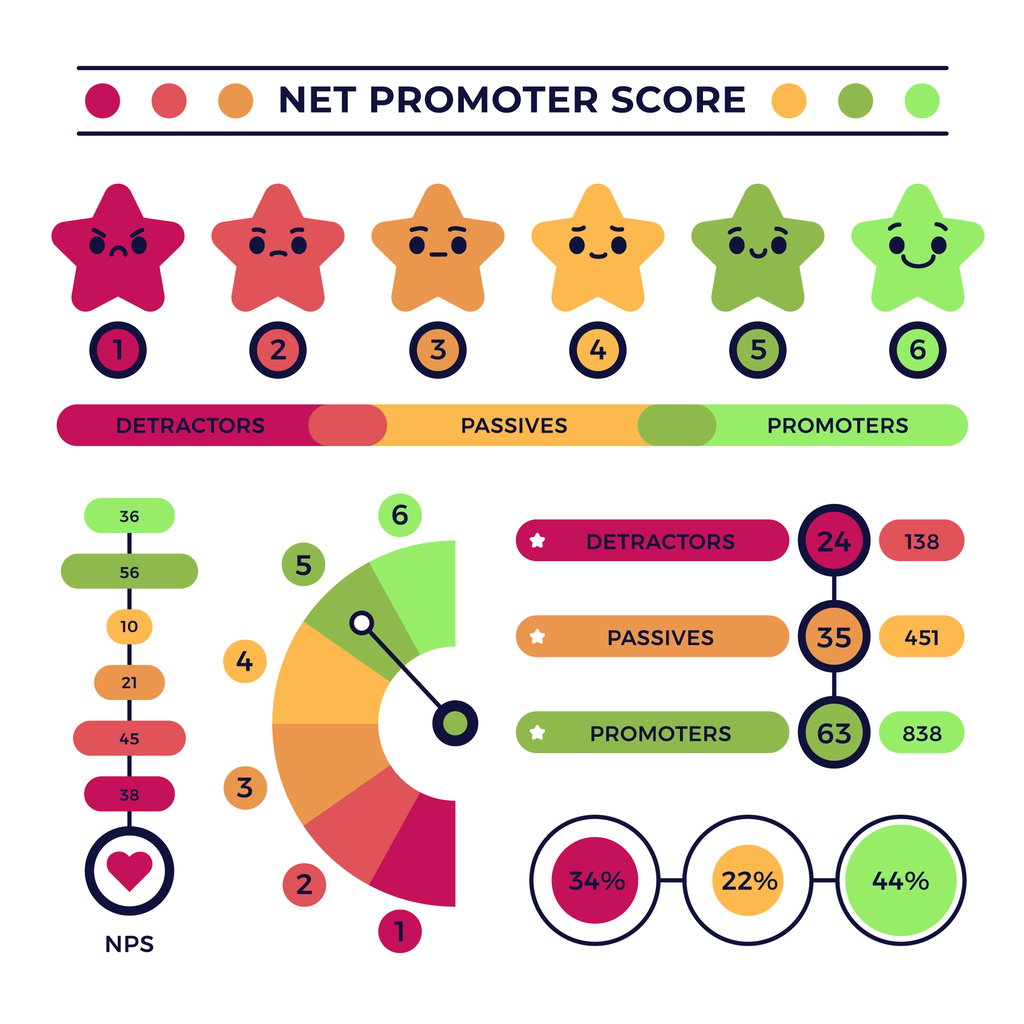NPS: the ultimate indicator... or a trap for brands?
Brands keep a jealous eye on their NPS, sometimes like watching a boiler ready to explode. But this KPI, as appealing as it may be, must be interpreted with caution—especially in a media context where proof of use now counts almost as much as recommendation.
Stéphane LE BRETON
10/17/20254 min read


A widely used KPI... but with strong cultural biases
Reminder for those unfamiliar with the term. NPS (Net Promoter Score) is a customer satisfaction indicator used worldwide. It is based on a single question: “On a scale of 0 to 10, would you recommend our product/service to a friend or family member?” The answers are used to classify customers into three categories:
Promoters (9–10): enthusiastic, loyal, likely to actively recommend.
Passive (7–8): satisfied but not very engaged.
Detractors (0–6): dissatisfied, may damage the brand's reputation.
The formula for calculating the score is simple: NPS = % of promoters – % of detractors.
The result is a number ranging from -100 to +100. An NPS > 50 is generally considered excellent. However, its interpretation depends heavily on the industry, country, and channel of interaction (point of sale, customer service, online purchase, etc.).
NPS is popular—many brands use it as a key indicator of loyalty. According to Qualtrics, 76% of companies worldwide still consider it a pillar of their CX (customer experience) strategy.
But this metric is not consistent everywhere. In the study Calibrating NPS Across 18 Countries, Qualtrics shows that responses to the question “Would you recommend this company?” vary greatly from country to country—even for beloved brands.
For example, in some countries, consumers are reluctant to give a 10, even for their favorite brands; in others, extreme scores are more common. In other words: a “high” NPS in one country does not carry the same weight in another.
Benchmarks by sector: useful indicators — but only partial ones
To put an NPS score into context, industry benchmarks can help. Here are some recent benchmarks:
In tech (consumer solutions), the median NPS is around 40-55, with leading companies exceeding 70.
In the financial sector, the average NPS is close to 44 for financial services (and 30 for banks) according to CustomerGauge.
For insurance, the average index is +35 according to 2025 data.
In retail/consumer goods, scores vary, but averages range from 35 to 50 for well-perceived brands.
These sector benchmarks provide a point of comparison—an overall “health score” to position a brand within its competitive ecosystem. However, they remain disconnected from the realities of media communication and say nothing about the actual impact of advertising or the credibility of the message conveyed, for several reasons.
Why is NPS no longer sufficient in the media context?
a) NPS measures intention, not exposure, never behavior
Not all satisfied customers become visible ambassadors. Even promoters can remain silent: a customer may be a fan of your product or service... without ever publicly sharing their opinion. They may answer “yes, I would recommend it,” but never actually do so. They may recommend it privately, off the record, without leaving any trace that can be used in an advertising campaign. NPS does not capture those who speak up. NPS remains a declarative promise—not a tangible testimonial.
👉 Result: no visible evidence, therefore no reassurance lever that can be activated in the media.
b) A good NPS does not imply good perceived credibility.
A brand may display a high NPS in its dashboards, while suffering from a blurred image, a lack of evidence, or spontaneous reviews on visible platforms (Google, Trustpilot, social media, etc.)
➡️ The gap between internal perception (NPS) and external perception (e-reputation) can be considerable.
c) The NPS does not have any “media weight” in itself.
A score does not fit into a media campaign. It does not appear in an advertisement. It does not accompany consumers at the key moment of purchase. In a TV, print, or digital advertisement, saying “our NPS is +42” has no narrative power or emotional impact. This type of recommendation does not guarantee any impact. It does not trigger attention or engagement.
On the contrary, a real, embodied, verified opinion embedded in the message—as BuyTryShare allows—creates a narrative break and immediate credibility. It is no longer a score, it is lived proof. And only this can restore trust in a space saturated with promises.
d) The “score chasing” syndrome: when NPS becomes an end in itself
Some marketing teams focus on the score rather than the actual experience, optimizing the questionnaire's margins of maneuver. The NPS becomes an objective rather than a signal. As a result, many companies end up:
Target the right moments (only after positive interactions)
Filter respondents (exclude critical or difficult segments)
Condition the experience (“feel free to give a 9 or 10 if you are satisfied”)
Reward teams based on the score, not on the actual quality of the experience
What was intended as an indicator of customer truth can easily turn into an internal performance target. And that's where NPS goes wrong.
👉 The result: the rating goes up... but it no longer reflects the customer's actual experience. We are no longer measuring spontaneous satisfaction, but a rating that is influenced, biased, and sometimes solicited.
Consequence: a loss of strategic clarity. The NPS ceases to provide insight when it becomes a target and no longer serves as a compass for the intrinsic quality of the product or service.
Scores are biased
Customer irritants are hidden from view
Teams believe they are “doing well” when in fact the actual experience is stagnating or deteriorating
Worse still, a company may invest heavily in artificially inflating its NPS, forgetting that it is not this figure that creates trust.
What proof of use corrects
Visible and certified customer proof, as in “augmented” media campaigns with the BuyTryShare commercial or insert, cannot be manipulated in the same way. It is based on:
a real-life experience (post-purchase)
a supervised collection (NF522, ISO 20488 standard)
public, verifiable, distributable content
an authentic signal, independent of a score
👉 Where NPS can be “optimized,” proof of usage is either present or absent. It cannot be manipulated—it must be earned.
Towards “NPS + visible proof”: the BuyTryShare approach
NPS and certified proof of use are not mutually exclusive: they are complementary.
NPS provides a NPS provides a macro view of satisfaction and latent loyalty.
Visible proof (verified customer reviews, testimonials) provides micro validation, integrated into the media journey.of satisfaction and latent loyalty.
With BuyTryShare, a brand can:
Measure your NPS to diagnose loyalty dynamics.
Engage satisfied customers to produce certified reviews.
Promote these reviews in the media (TV, press, cinema) to highlight what the NPS does not show.
The result: the audience receives not only a promise of quality—it receives credible, immediately actionable proof.
In conclusion: NPS remains useful, but it needs to evolve
NPS is a good starting point. But in a saturated media landscape, brands can no longer settle for a score—they need an authentic, visible signal.
The real question to ask is no longer “What is my NPS?” but “How can I make my NPS take shape, be seen, and be credible in the eyes of the public?”
BuyTryShare is that bridge: from score to proof. From declared customer to truly heard customer.
Our commitment
Reviving trust in brand advertising through innovation.
CONTACt
info@buytryshare.com
+33 6 83 53 70 41
© 2025. SLB consulting. All rights reserved.



